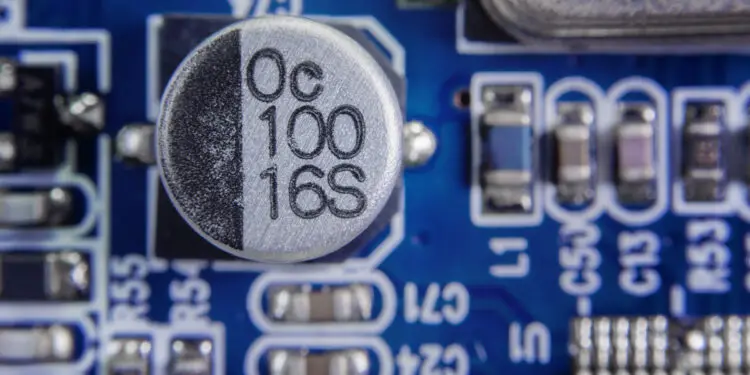On top of the global shortage of semiconductors, passive components are also seeing undersupply as COVID looms large in Southeast Asia, where suppliers are forced to manufacture at lower capacity.
Aluminum capacitors used in 5G, work-from-home electronics, electric vehicles (EV), and renewable energy tech are increasingly in demand, whereas top suppliers of aluminum capacitor have undergone facility shutdown and capacity reduction in the past few months. Japan-based Chemi-Con and Nichicon had to close its facilities in Malaysia in July and August. The two Japanese suppliers, plus Rubycon, who has production facilities in Indonesia, have over 50% market share of the world’s aluminum capacitor. Another Japan-based main supplier of solid-state capacitors in Malaysia is Panasonic.
Japanese suppliers face lockdowns in Malaysia
After going through lockdowns in July and August, Chemi-Con and Nichicon recovered only 60% of manpower on site, capping utilization rate. They are the main suppliers for car applications, gaming devices, servers, and base stations. Reduced utilization rates and production capacity, however, have posed some significant challenges with lead times prolonged to over six months. The COVID situation in Malaysia could lead to about 30-60% decrease in shipments, according to industry sources.
Demand for aluminum capacitor rises as demand for home economy and cloud-based services rises. Since the early COVID impact in 2020, clients have been preparing for what might come next and sought back-up support from suppliers from Taiwan and China.
Japanese suppliers have a solid reputation for stability and organization. It takes time to complete product verifications between them and clients, so it has been difficult for clients to find back-up suppliers within just a couple of years. The imbalance in demand and supply, however, is accelerating such process as inventories run low and lead times show no signs of improving, and it brings Taiwan-based suppliers the opportunities to take part in the car supply chain.
Orders spilled to Taiwan and China
Before the pandemic, suppliers from Taiwan and China mostly saw order visibility shorter than two months. They used to be able to guarantee delivery within four to six weeks, but now they need at least three to six months to deliver. In the first quarter, suppliers even shipped by air, instead of by sea, just to win more time.
Taiwan-based suppliers Lelon Electronics, Chinsan Electronics, Kamei Electronics, and Apaq Technology have seen revenue grow over 20% on year for the first half of 2021. China-based Aihua Group and Nantong Jianghai Capacitor also saw strong growth for the same period.
A large portion of orders were spilled from Japanese suppliers who had to run on low capacity and China happens to have a steady manufacturing scene where supplies of aluminum foil and aluminum shells are within reach.
According to industry sources, Chinese suppliers have not only benefitted from the growth in overall demand, but also have been propelled by the Chinese government’s policies to manufacture locally and independently from Japan and the US. The local supply chain has grown even more united as demand for passive components grow bigger and bigger, boosting suppliers’ revenue.
For the first half of 2021, Jianghai posted 56.5% increase in revenue to CNY1.67 billion (US$257.4 million) and 46.5% increase in net profit to CNY204 million. Aluminum capacitors represent nearly 78% of revenue, increasing by 61.9% on year, thanks to growing demand for solar energy and EV charging infrastructures.
Aihua excels in manufacturing capacitors for lighting and fast-charging mobile phone chargers and has a specialty in small-sized aluminum capacitors. For first-half 2021, Aihua reported CNY1.51 billion in revenue, up by 40.5%, and CNY232 million in net profit, up by 31.5%, after having successfully expanded its clientele.
Whats’s to come into 2022?
To sum up, there’s no shortage of order and demand but capacity. High-end components are shipped fresh to clients with no inventories. Aluminum capacitors used in consumer electronics are the same situation.
One potential threat, though, is the carbon emissions and enormous consumption of electricity during the manufacturing process of aluminum foil. In order to secure future supply and to stabilize manufacturing costs, Taiwan’s Lelon is considering buying off aluminum foil maker Liton’s equipment to ensure production capacity will be intact.
High-end aluminum capacitors used for servers and base stations require more durable materials and more advanced technologies, while consumer electronics are cyclical products that are affected by economic conditions. To raise the percentage of high-end components in overall product mix is another way for suppliers to ensure future company growth.
Sources from Taiwanese suppliers pointed out that even though order visibility has extended to the end of 2021, 2022 remains unknown, given that demand for large-sized displays and notebooks has gone soft and that China has captured much of the orders. How much ground can Taiwanese suppliers hold onto in 2022 remains unclear.































